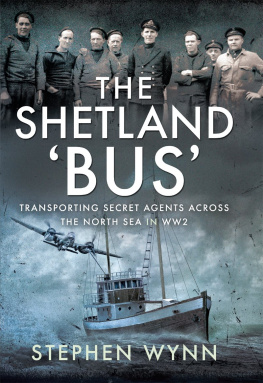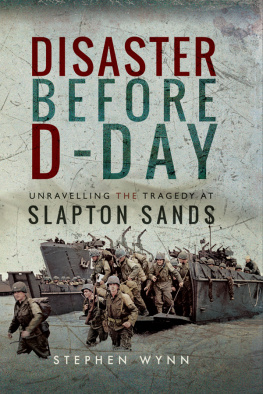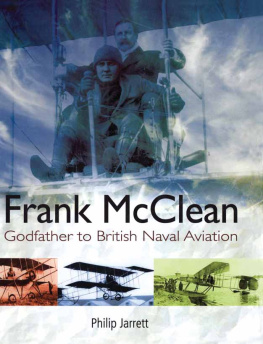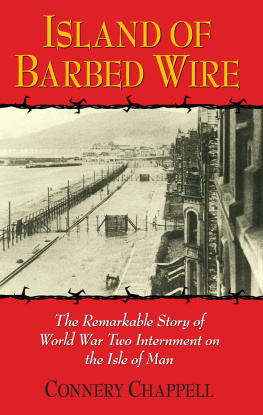Your Towns and Cities in the Great War
Isle of Sheppey in the Great War
Your Towns and Cities in the Great War
Isle of Sheppey in the Great War
Stephen Wynn
First published in Great Britain in 2017 by
PEN & SWORD MILITARY
an imprint of
Pen and Sword Books Ltd
47 Church Street
Barnsley
South Yorkshire S70 2AS
Copyright Stephen Wynn, 2017
ISBN 978 1 47383 406 4
eISBN 978 1 47386 529 7
Mobi ISBN 978 1 47386 528 0
The right of Stephen Wynn to be identified as the author of this work has been asserted by him in accordance with the Copyright, Designs and Patents Act 1988.
A CIP record for this book is available from the British Library
All rights reserved. No part of this book may be reproduced or transmitted in any form or by any means, electronic or mechanical including photocopying, recording or by any information storage and retrieval system, without permission from the Publisher in writing.
Pen & Sword Books Ltd incorporates the imprints of
Pen & Sword Archaeology, Atlas, Aviation, Battleground, Discovery,
Family History, History, Maritime, Military, Naval, Politics, Railways,
Select, Social History, Transport, True Crime, Claymore Press,
Frontline Books, Leo Cooper, Praetorian Press, Remember When,
Seaforth Publishing and Wharncliffe.
For a complete list of Pen and Sword titles please contact
Pen and Sword Books Limited
47 Church Street, Barnsley, South Yorkshire, S70 2AS, England
E-mail:
Website: www.pen-and-sword.co.uk
Authors Biography
Stephen is a happily retired police officer, having served with Essex Police as a constable for thirty years between 1983 and 2013. He is married to Tanya who is also his best friend.
Both his sons, Luke and Ross, were members of the armed forces, collectively serving five tours of Afghanistan between 2008 and 2013. Both were injured on their first tour. This led to his first book, Two Sons in a Warzone Afghanistan: The True Story of a Fathers Conflict , which was published in October 2010.
His teenage daughter, Aimee, currently attends one of the Districts secondary schools. Both of his grandfathers served in and survived the First World War, one with the Royal Irish Rifles, the other in the Mercantile Navy, while his father was a member of the Royal Army Ordnance Corp during the Second World War.
Stephen collaborated with one of his writing partners, Ken Porter, on a previous book published in August 2012, German POW Camp 266 Langdon Hills , which spent six weeks as the number one best-selling book in Waterstones, Basildon, between March and April 2013. Steve and Ken collaborated on a further four books in the Towns & Cities in the Great War series by Pen and Sword. Stephen has also written other titles for the same series of books.
Stephen has also co-written three crime thrillers which were published between 2010 and 2012, and centre around a fictional detective named Terry Danvers.
When he is not writing, Tanya and he enjoy the simplicity of walking their four German Shepherd dogs early each morning when most sensible people are still fast asleep in their beds.
CHAPTER 1
Brief History of the Isle of Sheppey
The Isle of Sheppey is an island on the north coast of Kent and to the east of London overlooking both the Thames estuary and the River Medway.
The name Sheppey is derived from the ancient Saxon word Screapige , which when translated means Isle of Sheep. The connection is still in existence to this day with large flocks of sheep still grazed on the islands pastures.
There is evidence to support Neolithic and prehistoric occupation of the area, and the island was occupied in Roman and medieval times. In the year 855, the Isle of Sheppey became home to an invading Viking army, who used it as their base for the winter.
The island is separated from the rest of Kent by the Swale channel, which was used for shipping in ancient times, especially during times of bad weather, as it acted as a natural buffer to the dangers of having to manoeuvre in the waters of the Thames estuary or the North Sea.
During the sixteenth century, King Henry Vlll, having realised the strategic value of Sheerness, had a blockhouse built there along with two other similar fortifications on the island.
In 1666, Sir Bernard de Gomme, a Dutch engineer who had been knighted six years earlier, was sent to Sheerness by King Charles ll to review its fortifications and a fort was added to protect and strengthen the already present blockhouse. Ironically in June 1667 the Isle of Sheppey suffered the ignominy of being occupied by the Dutch for a week. A Dutch fleet of seventy-two ships sailed up the Thames estuary and captured the fort at Sheerness in a matter of a few hours.
The diary of Samuel Pepys states that the fort was manned largely by deserters from the British Royal Navy. Pepys at the time was the Secretary of the Navy Board. There was also the suggestion that those guarding the fort were simply soldiers who were underfed and unpaid, but whatever their status, they put up little in the way of a fight.
Before leaving, the Dutch pillaged supplies, ammunition and guns, before setting fire to most of the islands buildings. As a result of the Dutch invasion and the ease and speed with which it was carried out, the importance of solid and dependable fortifications became obvious. But it was still nearly twenty years until they were finally completed.
As the dockyard at Sheerness increased in size and importance so did the defensive fortifications which surrounded it. After all, there would be no point in having a dockyard, where ships of the British Royal Navy could anchor up, be repaired and built, if it was vulnerable to attack by foreign fleets.
There was a later and much bigger structure, named Fort Townshend, built on the same site between 1780 and 1782, its main purpose being to defend Sheerness Dockyard.
On 16 April 1797, at Spithead, which was an anchorage location off Portsmouth, sailors and some officers on board sixteen British Royal Navy ships that were part of the Channel Fleet took the drastic step of demanding more pay and better living conditions on board the vessels on which they served.
Inspired by this, sailors on board ships at the Nore anchorage point, situated in the Thames estuary, mutinied on 12 May 1797. The British Royal Navy vessel, HMS Sandwich , was seized by her crew, which led other ships also anchored there to do the same, their grievances being the same as those of their comrades at Portsmouth.
A list of demands was delivered to Admiral Charles Buckner on 20 May 1797 which included asking for a pay rise, pardons for all and a modification of the navys articles of war. For some reason the mutineers then added the addendum that the king, George III, dissolve Parliament and make peace with France, whom England was at war with at the time. Nearly all of the demands were refused other than pardons, which was on the understanding that the men returned to their normal duty immediately. Rather than accept this offer the mutineers decided to extend their activities; they blockaded London and prevented merchant ships from entering the capital to unload their cargoes. More and more of the ships which had been part of the original mutiny off the Isle of Sheppey sailed off, reducing the effectiveness of those who remained steadfast in their aims. The mutiny finally came to an end on 16 June 1797. The leader of the mutineers, Richard Parker, a sailor serving on board HMS Sandwich , along with twenty-eight others, were hanged on 30 June 1797 for their part, while others were imprisoned, sent to Australia or flogged.





















